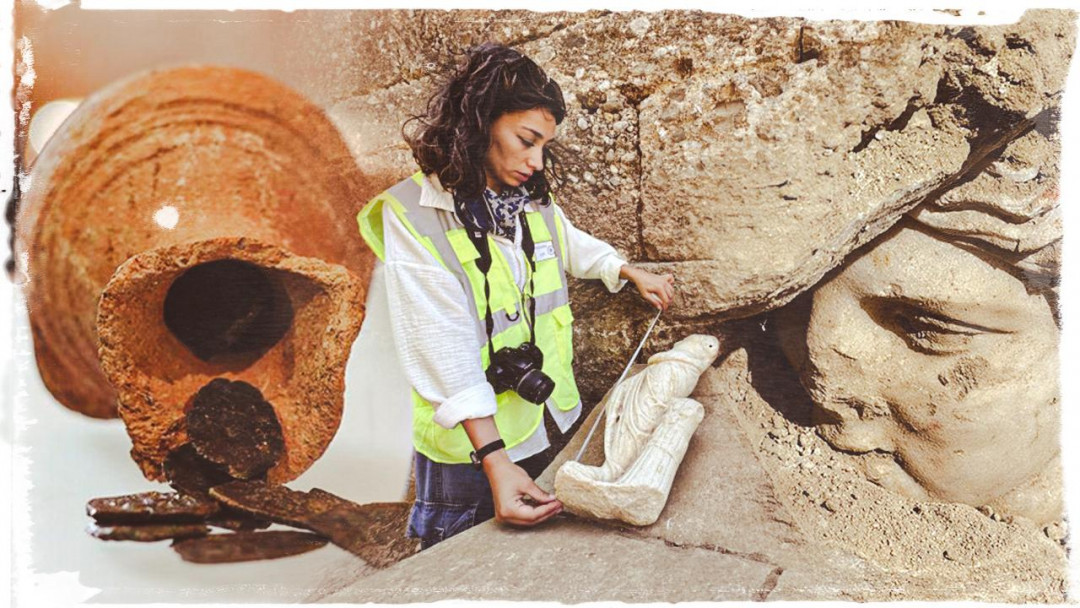Archaeological Discoveries in Turkey in 2024

Each year, numerous archaeological excavations are carried out in Turkey. These excavations result in significant discoveries that will be passed down to future generations. Here are some of the important historical artifacts unearthed in Turkey's archaeological excavations since the beginning of 2024.
The ancient lands of Anatolia, which have hosted countless civilizations throughout history, are home to innumerable structures and artifacts from the past. Many more are waiting to be unearthed and brought to light.
Thanks to archaeological excavations conducted across Turkey, many artifacts are found each year and take their place in museums. Last year was very fruitful in this regard, with many important artifacts discovered that shed light on human history. In 2024, archaeological excavations continue at full speed. In fact, a series of new archaeological discoveries have been made in the first six months of the year. The statues of Zeus and Aphrodite unearthed in the ancient city of Aspendos, the 2,100-year-old head of the goddess of health Hygieia found in Laodicea, and the 3,500-year-old, 800-meter-long colonnaded street discovered at Hıdırlık Tower are just a few examples...
Here are the significant artifacts and their stories discovered during the excavations conducted in the first six months of 2024.
2,000-Year-Old Statues of Zeus and Aphrodite Found in Aspendos
One of the significant discoveries in 2024 took place in the ancient city of Aspendos. Archaeological excavations in the ancient city of Aspendos, located in the Belkıs neighborhood of Antalya's Serik district, uncovered statues of Zeus and Aphrodite approximately 2,000 years old.
The statues, believed to date back to the Roman period, were found in one of the shops in the Agora area. The statues, about 50 centimeters high, are estimated to have been sculpted in the early phase of the Roman Imperial Period. After documentation, cleaning, and restoration works, the statues of Zeus and Aphrodite will be handed over to the Antalya Museum.
Archaeological excavation works have been ongoing in the ancient city of Aspendos since 2011.
Statue Head of Goddess Hygieia Found in Laodicea
In the archaeological excavations in the ancient city of Laodicea, which is on the UNESCO World Heritage Tentative List, the head of a statue of Hygieia, the goddess of hygiene and health, was found.
The discovery of the head of a statue of Hygieia, the daughter of the god of medicine Asclepius in ancient times, has another significance: it strengthens the thesis that Laodicea also had a medical school.
In the ongoing excavations in the ancient city of Laodicea in Denizli for 21 years, 5,000 artifacts have been unearthed to date.
Colonnaded Street Discovered at Hıdırlık Tower
Archaeological excavations have been carried out at Antalya's famous Hıdırlık Tower since 2020. In the excavations, which have so far revealed ancient period remains and structures, a colonnaded structure was recently discovered. Mosaic floors with patterns were found on the southern part of the tower.
In the works conducted at Hıdırlık Tower, which is believed to have been built by Roman Emperor Hadrian in the second century, remains of an ice factory, ancient bath, mosaics, and castle walls were previously unearthed.
Lastly, a colonnaded street was discovered on the southern part of the tower, shedding light on history. The street, estimated to be 3,500 years old, is about 800 meters long.
The historical remains unearthed at Hıdırlık Tower will be opened to visitors with a viewing terrace to be prepared after the completion of the excavation works.
Historic Piggy Bank Found in Karabük
A historic piggy bank was found in the ongoing archaeological excavations at the ancient city of Hadrianopolis in Karabük's Eskipazar district. Ten coins dating back to 1,400 years ago were found in the piggy bank.
The ancient city, used as a settlement during the Late Chalcolithic, Roman, and Early Byzantine periods, is called the "Zeugma of the Black Sea" because of its mosaics depicting many animal figures.
In the ongoing excavation works in the ancient city, two baths, two churches, a defensive structure, rock tombs, a theater, an arched and domed structure, a monumental cult niche, walls, and buildings like a villa have been uncovered so far.
Artifacts Dating Back 11,000 Years Found in Karaburun
In the surface works carried out in Karaburun, İzmir, significant historical remains dating back to 11,000 years ago were found. These archaeological remains, revealing unknown aspects of İzmir's prehistoric period, are said to belong to nomadic, gatherer-hunter groups that lived in the region.
The findings in Karaburun are also expected to illuminate the historical processes before the emergence of agriculture-based lifestyles in Western Anatolia.
All the discoveries and findings in the Karaburun region have made a significant impact in the scientific world. Articles about the discoveries have been published in international and national academic journals such as the "Journal of Field Archaeology," "Antiquity," and "Arkeoloji Dergisi."
Historic Market Discovered in Dara Ancient City
In the ongoing archaeological excavations at Dara Ancient City in Mardin, a historic market was discovered. In the excavations carried out by the Mardin Museum Directorate, more than ten shops and workshops were found in the agora (market).
In the excavations that started 38 years ago in the Dara Ancient City in the central Artuklu district, remains of a necropolis (mass burial site), church, palace, market, dungeon, armory, and aqueduct have been unearthed to date. More than 10,000 artifacts, including arrowheads, lamps, glass, ceramic items, and jewelry, have also been unearthed in the region.
The city, founded by the Eastern Roman Empire to protect its border against the Sasanians, was thought to be a garrison city until now. However, the discovery of the historic market also suggests that it was an important trade center in the 6th century.


